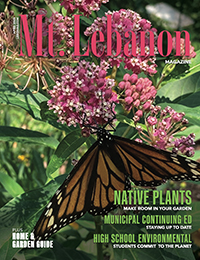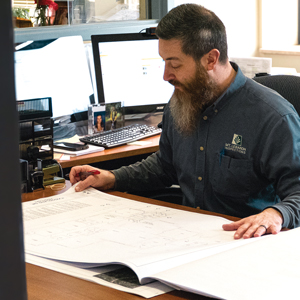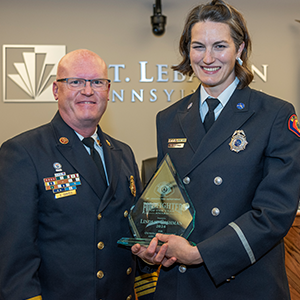lebo arboretum

Mt. Lebanon’s streets, parks, parklets, traffic islands, rights of way and open spaces—all beautified by trees—exemplify the community’s commitment to green space, as does the more than $430,000 allocated for forestry in the municipal budget, the parks advisory board and the annual Arbor Day celebration. Mt. Lebanon has been designated a Tree City USA by the National Arbor Day Foundation for more than a decade, so seeking to become an accredited arboretum seemed a logical next step to the Mt. Lebanon Parks Board, says Public Works Director Rudy Sukal, liaison to the board.
The parks board submitted an application for accreditation to ArbNet, an international online community of tree-focused professionals, in early October, about the same time that Lebo Arboretum’s new web pages went live on the municipal website at www.mtlebanon.org/arboretum. Sukal is optimistic that Mt. Lebanon will learn sometime this month that our arboretum, which includes 10,000 park trees and 12,000 street trees throughout the entire community, has received Level One accreditation.
In applying, “Mt. Lebanon is taking credit for things we already have and moving forward to promote education and opportunities for people who care about trees,” says Sukal, who has worked closely with the parks board’s Elaine Kramer and Ron Block on the project. “An arboretum is an additional resource for education.”
An arboretum can be a botanical garden, but in a narrower sense, arboretum refers simply to a collection of trees. The parks board wanted to create an arboretum for many reasons, as the application states: a well-planned canopy of trees adds character to the community; trees are part of our local history—our town is named for a cedar tree brought back from a pilgrimage to Lebanon by the Rev. Joseph Clokey; trees are important ecologically, helping to reduce heat and improve air quality; trees make our town unique, and having an arboretum promotes a thoughtful approach to forestry budgeting and tree planting.
As the application also states, the arboretum’s purpose is to encourage species diversity and specimen tree planting in public spaces, and over the long term, to enhance the character, resilience and visual appearance of the community. The parks board also hopes that the arboretum will raise public awareness and involvement in the municipality’s urban forestry management.
The first step toward becoming an accredited arboretum was devising a plan to identify and label 25 species of trees or woody plants in Mt. Lebanon. That was accomplished over a period of several months, and the locations of those trees, along with illustrations and pertinent facts about the trees are now available by clicking on the online tree map. In addition to having a plan and labeling the trees, Level One accreditation requires having an organization to carry out the plan, and have volunteer or paid help. It also requires that the trees be accessible to the public and that the community holds at least one tree-related event a year. Mt. Lebanon should easily meet these criteria and could eventually add programs, services and events that could lead to a Level Four accreditation.
Lebo Arboretum would like to expand the number of species of trees and shrubs that are labeled—100 would be needed for level two certification—and offer more educational programing and events. This will require volunteers. Find ways you can help at www.mtlebanon.org/arboretum.
Photo: Rob Papke





